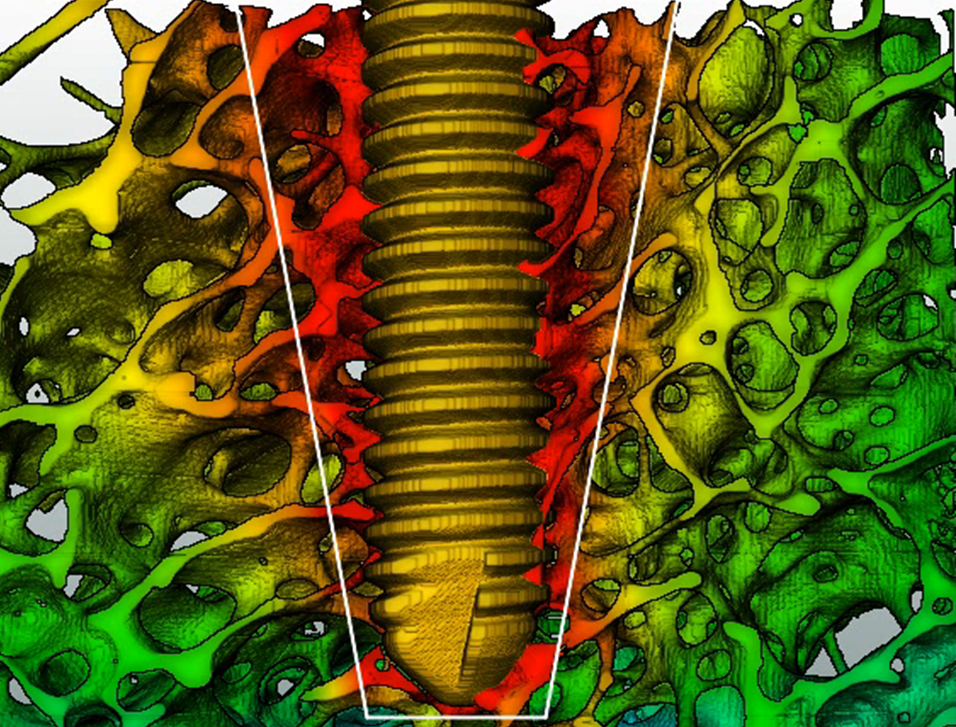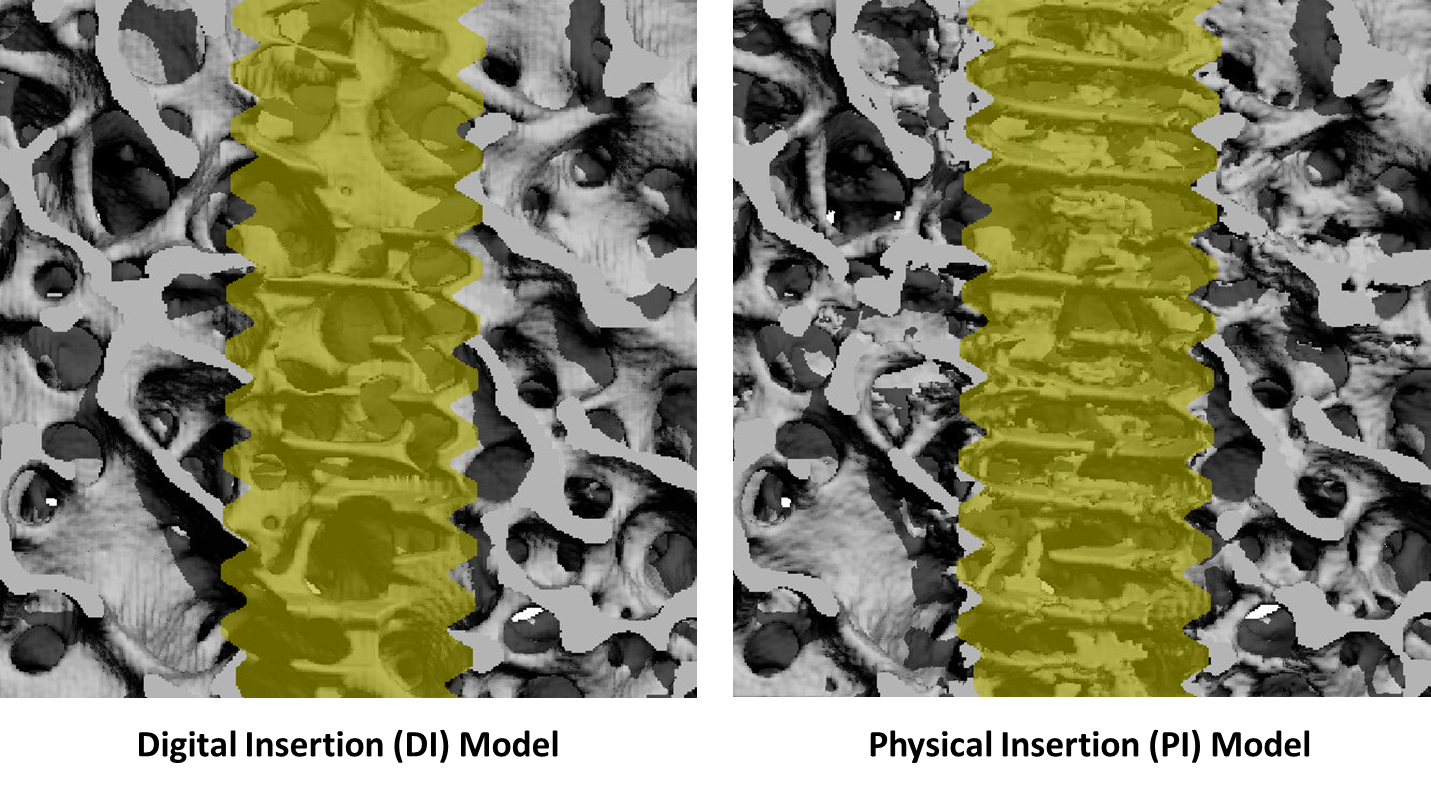Computational modelling of mechanical implant-bone interaction
Osteoporosis is a bone disease characterized by low bone density and a deteriorated micro-structure. In osteoporotic bone, implant stability and appropriate fracture fixation is limited by low bone quality. The overall goal of this project is to systematically optimize implant design for improved fracture fixation in osteoporotic bone. In order to assess in more detail the causes for the failure of implants in osteoporotic bone, this project focuses on high resolution computational models of implant-bone interaction.
The main aim of this approach is;
i) to predict the mechanical properties of screw-bone constructs on the global and local level and;
ii) to provide a computational tool for a systematic approach in early phase implant development.
To achieve this, µCT technology is used to non-destructively visualize and characterize the 3D structure of bones and implants. Based on the µCT images, computational tools to quantify primary implant stability as a function of peri-implant bone quality are developed. These models will increase the understanding of the characteristics of the implant-bone interaction, and related to it, possible failure mechanisms. The findings to date indicate that peri-implant bone damage occurs already during implantation which needs to be considered in evaluation of implant stability.
Contact
No database information available

